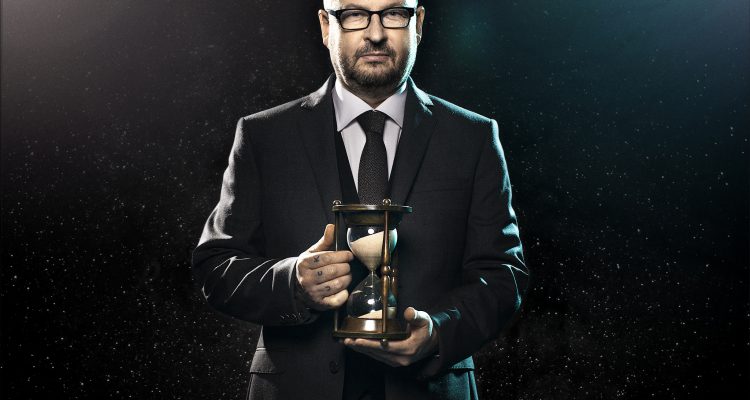
What with all his provocations and (usually) self-manufactured controversies, it’s sometimes easy to forget that Lars von Trier is a truly gifted filmmaker, who yes, is a prankster and trickster as well, but also a man who imbues his characters with a rich sensitivity, even if the conditions they face can be cruel and harsh. Not all his films are masterpieces, but he’s been turning heads at home and abroad for getting on 30 years now with films like “Europa,” “Dancer in the Dark,” “Breaking the Waves” and “Dogville” making some of the biggest waves internationally. Never easy watches, but always rewarding, he’s slowly been assembling one of the most interesting back catalogues in recent memory — ranging from period dramas to musicals to comedies — even if accusations of misogyny and misanthropy aren’t easily dismissible.
Von Trier’s latest, the apocalyptic drama “Melancholia” with Kirsten Dunst, Charlotte Gainsbourg, Kiefer Sutherland, Alexander Skarsgård and John Hurt among many others, goes out on limited release in theaters this weekend (it’s also available on VOD), and while it’s not quite A-grade von Trier, it nonetheless finds him in the sharpest command behind the camera in years. It may be his most beautiful film as well, with its breathtaking cinematography asking for a big screen presentation. We’ve taken the opportunity to look back over the director’s career, spanning from 1984’s debut “The Element of Crime” to 2009’s typically controversial “Antichrist.” Next up is erotic drama “Nymphomaniac,” and a possible collaboration with Martin Scorsese on a new take on “The Five Obstructions,” but in the meantime, even experienced von Trier watchers should find something they may have missed below.
 “The Element of Crime” (1984)
“The Element of Crime” (1984)
Though von Trier outright dedicated his last film “Antichrist” to Andrei Tarkovsky in the end credits, that couldn’t have been much of a surprise to anyone who’s been a follower of the provocative Dane’s career. The Russian master’s influence can be seen as far back as “The Element of Crime,” his first feature, not least of which in the film’s sepia-soaked visuals, recalling the opening and closing segments of “Stalker.” ‘Crime’ is certainly a beautiful film to look at it, but it’s not the most inviting: its opaque narrative – concerning an English detective named Fisher who undergoes hypnosis to remember his last case – kept this writer at something of a remove. We wanted to love it, as it’s so awash in noir conventions while also presenting a thoroughly realized dystopic dream world and a cool, pre-“Manhunter” cop/criminal yin-and-yang concept. But in the end it’s the visuals and mood that are most memorable in this first entry of the director’s “Europa Trilogy.” [B]
 “Epidemic” (1987)
“Epidemic” (1987)
“A film ought to be like a pebble in your shoe,” Lars von Trier says as a type of twisted toast off the top of the black and white feature, “Epidemic.” Well, mission fucking accomplished. A bifurcated meta-narrative about screenwriting, von Trier’s sophomore film might be his most tedious effort. Shot in grainy and stark black and white and starring von Trier and screenwriter Niels Vørsel as themselves, “Epidemic” starts out as script that the duo hope to write about a virus that is slowly starting to spread around the word. Vacillating between the stylized “movie” version of the film – which stars Lars as a righteous doctor trying to save country folk from the disease – and then the raw portion of the narrative where Lars and Niels actually talk about writing the film, choosing the right wines to go with food and other inessential blather. Though it does feature the incomparable Udo Kier in a brief cameo role, it is certainly not enough. The only satisfying part of the drama is when the disease seems to travel from the fictional movie into the real plot – get that? Characters then commit suicide and/or then begin to (ambiguously) show signs of the disease. One of von Trier’s least essential films. [C-]
 “Europa” (1991)
“Europa” (1991)
Released as “Zentropa” in the U.S. but recently restored to its original title with 2008’s Criterion Collection DVD release, the casting of expatriate American Eddie Constantine in a side role is telling as it’s not unlike Jean-Luc Godard’s “Alphaville,” an oblique take on the science-fiction genre which starred Constantine in the lead. Shot in moody black and white with flourishes of color generally saved for blood and employing odd rear-projection effects, “Europa,” like “The Element of Crime,” is one of Lars von Trier’s most stylish and hypnotic efforts. Employing a Kafka-esque feverish dream tone, “Europa” centers on an imagined world where an idealistic American (Jean-Marc Barr) travels to post-war Germany in 1945 as a railroad conductor in hopes of doing some good for the world and the German people. Soon, he meets a femme fatale and becomes entangled in a Nazi-sympathizing plot to act out a terrorist attack on occupying U.S. forces. Co-starring Barbara Sukowa, Udo Kier, Max von Sydow and Ernst-Hugo Järegård, “Europa” is dripping with both melodramatic film-noir atmosphere – like Kafka’s take on “Casablanca” – and a drowsy surreal tenor that is all Lars von Trier. According to legend (and Roger Ebert), when the film won the Prix du Jury at the 1991 Cannes Film Festival, von Trier flipped the jury the bird and stalked off, clearly thinking the film deserved the Palme d’Or prize. [B]

